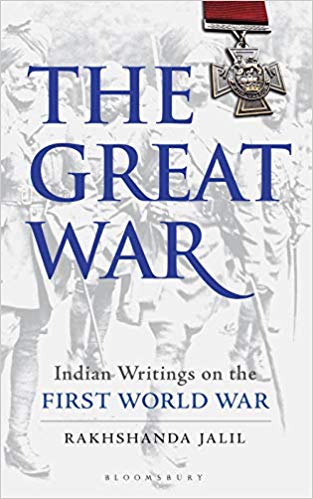The war revealed to the Indian villager who served in France an entirely new standard of housing and comfort. He saw there with astonishment and envy how well the peasant proprietor can live, and, returning to his village, beheld its cattle-shed life with a tinge of disgust.
Malcolm Darling, The Indian Empire at War, p. 519
The laughter on the faces of those who will die tomorrow is unmixed with sadness or pity.
Kazi Nazrul Islam, The Great War: Indian Writings on the First World War, p. 46
The publishing season of War continues! The two world wars of the 20th century have produced a prodigious amount of academic and non-academic literature in the 21st century because this literature commands a good market. After all, curiosity regarding these cataclysms remains seventy-five years after the Second World War ended in 1945. During 2014-2018, the hundredth anniversary of the First World War was ‘commemorated’ across the world. Whether such mass killing should be celebrated is a different matter, but publishers, especially in the West, had a good time selling books on WWI from a variety of perspectives. Books don’t sell these days and, therefore, fashion and markets must be manufactured for them. And there is nothing better than dovetailing commemorations into the business of commissioning, publishing and selling paper books in the age of PDFs and the Kindle. Thus, literally hundreds of books and coffee table books have been published on WWI since 2014. Whether most of them tell us a new story of the War is a different matter. In this process, some authors have tried to undermine the eurocentrism inherent in the literature generated by WWI since 1918. Their works highlight the contribution of the European colonies to the War effort of the master countries and India, in this scheme of things, obviously plays an important role. It should be remembered that the Indian Army of WWI was fielded in several theatres of the War including the Western Front but its War record, in general, is not well known to the lay readers. This is not to say that Indian military historians since 1950 have ignored this important chapter of Indian military history; the revised memory of WWI has made military history saleable at least for a few years.
While it is good to see writers and publishers getting together to narrate the Indian chapter of the WWI afresh with the help of new and variegated sources, what might irritate the serious historian is the publication of obsolete general military histories in the shade of the WWI. The Military History of India (Rupa) falls in this category and is the most expensive of the three books being reviewed! Written by a former Director of the History Division, Ministry of Defence, Government of India, the book has neither footnotes nor a reference list of primary sources consulted. It reads like a textbook, which could have been called ‘A Comprehensive History…’ published in the 1950s. The author’s generalizations are dated enough not to merit comment. The book contains a bibliography that omits all the historians renowned for their original and path-breaking research in Indian military history—clearly the author loves to write but dislikes reading the latest books on his subject. The cavalier approach of the author, and ignorance of the publishers, is evident from the fact that Chapter 16 on the colonial and postcolonial Indian Navy does not even mention the Naval Uprising of 1946. In its haste to join the bandwagon of military history flagged off by the memorialization of WWI, an overpriced book, which discerning readers will eschew, has been published.

